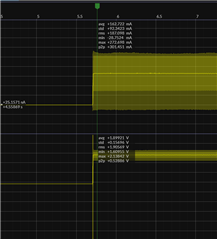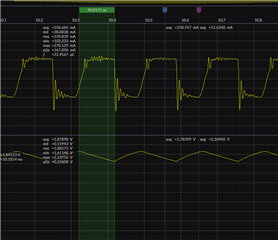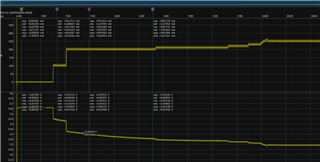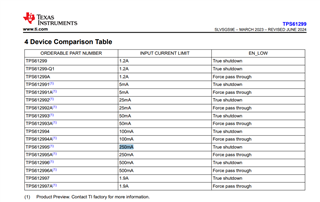Other Parts Discussed in Thread: TPS2553, TPS61252, TPS61033, TPS61253
Tool/software:
I'm working on a new design (for an alternative circuit for LTC3125) that will operate with a 3.6V battery as input as in the circuit given below

So here I'm expecting the battery shall be able to charge the 2 supercapacitors (C1 & C7) within 30 Seconds up to 4.0V (as configured using TPS61023 R4 & R7 resistors) & this shall be done using a current limiting IC TPS2553 which will limit the Input current to 200mA from 3.6V Battery.
But when i turn ON the circuit, At the output of Current Limit IC(+Vlim_Out) the voltage is dropping up to 1.9V on average & average input current across R8 is 162mA initially (Attached image-2),

Image-2
When image-2 zoom in to much deeper for as attached below image-3, i can see a high & low current peaks.

Image-3
Although this circuit is able to charge the super capacitors with in 80 seconds, but when Vout is connected to a GSM Modem (IoT Modem), then Vout is not able to withstand on the 4.0V charged voltage.
But when TS2553 tested individually on full load it is able to provide 200mA with a voltage drop of Battery from 3.6V to 3.3V (Attached Image-4), but when Current Limit IC(+Vlim_Out) was connected to boost converter, then its not working.

Image-4
Please let me know the solution for my issue. Thanks in advance




